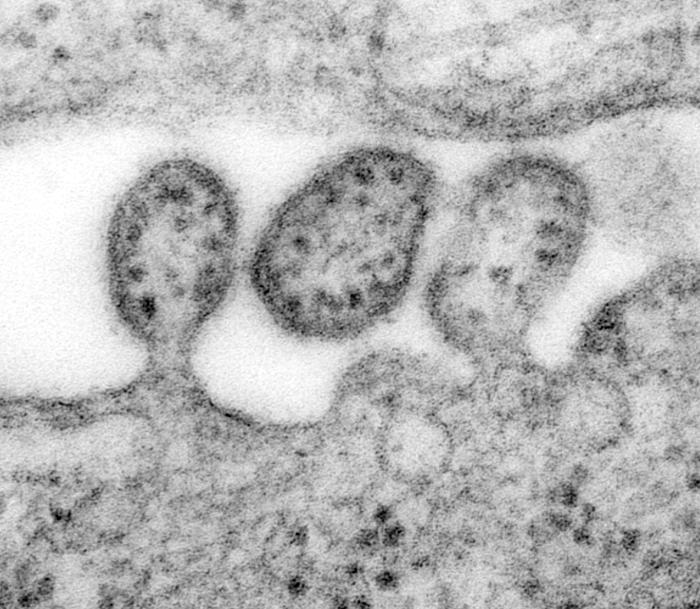
The function of ribosomes is to synthesize proteins as directed in the messenger RNA. Ribosomes are organelles and help produce proteins with many different functions in the body, they can be found within the cytoplasm or the endoplasmic reticulum.
Where are ribosomes?
Our cells and other animal cells contain many different components that function together to promote the wellbeing of the cell and the body. The mitochondria, for instance, provides our cells with the necessary amount of energy compounds needed to perform their various functions. The nucleus houses the DNA that cells use when they need to use genes to create proteins and regulate various systems in the body, like growth.
Among the different components of our cell is the ribosome. Ribosomes are responsible for protein synthesis. They are located as free particles throughout the cell in both prokaryotic, like bacteria, and eukaryotic, like us, cells. They can also be found attached to the rough endoplasmic reticulum because the rough ER also helps in the production and movement of proteins. They have been also found in the mitochondria and chloroplast.
Ribosomes were first described by George E. Palade, a cell biologist, in 1955 as he observed the endoplasmic reticulum and noticed their presence. They are probably not hard to miss in animal cells because a typical cell can contain about 10 million ribosomes. They are fewer in bacterial cells, like E. coli, as some are around 10,000 ribosomes.
The size of the ribosome varies depending on what sort of cell it is in, but its function remains the same.
Structure of Ribosomes
Ribosomes are composed of ribosomal RNA (rRNA) and ribosomal proteins. The ratio between the two components varies as prokaryotes are around 60% rRNA and 40% protein while eukaryotes can be an even split between the two.
Human ribosomes and that of other eukaryotes are composed of four rRNA strands while bacterial ribosomes are made of three strands of rRNA. These rRNA are coupled with proteins that form the overall structure of a ribosome. In eukaryotes, the ribosomal protein enters the nucleus and is processed together with the rRNA strands to form a large ribosome subunit and a small ribosome subunit. They are shipped out of the pores of the nucleus and meet to form the completed ribosome.

A highly magnified transmission electron micrograph (TEM) depicted some of the ultrastructural details of a number of Lassa virus virions. Credit: Public Domain Files
There are around 40 to 80 proteins used to create the full ribosome. The smaller subunit is referred to as the 40s and the larger is 60s in eukaryotes while it is 30s and 50s, respectively, in prokaryotes. The (s) is referred to as Svedberg units and defined as the sedimentation rate of the subunits in a centrifugal field. This means the time it takes for each subunit to reform when placed in a centrifugal chamber. The smaller subunits form faster than the larger ones.
Function of Ribosomes
As mentioned the ribosome’s function is to create proteins. This process is the conversion of our genetic information into proteins as we move from DNA to RNA and finally to protein.
“The rich and quantitative nature of ribosome profiling data provides an unprecedented opportunity to explore and model complex cellular processes.” — Nicholas T. Ingolia, Jeffrey A. Hussmann, and Jonathan S. Weissman, from “Ribosome Profiling: Global Views of Translation”
In this process, we have a few parts to consider. The first is the ribosome which acts as the machinery to connect the different parts. We then have messenger RNA (mRNA), which are RNA strands that contain instructions on how to build a particular protein. This instruction is translated from DNA, where everything protein instruction is stored. Next, we have transfer RNA (tRNA), which are RNA strands that carry specific amino acids (the building blocks of proteins) to match what is on the mRNA.
The ribosome acts as an assembly line and starts “reading” the mRNA, finds the corresponding tRNA and attaches the amino acid to a binding site. Then, it reads the next part of the mRNA and finds the corresponding tRNA and attaches the amino acid to the existing amino acid. This process continues until the entire tRNA has been read and an initial protein is formed.
The protein, still unfinished, is removed from the ribosome and sent to the cytoplasm, in prokaryotes, or the Golgi apparatus, in eukaryotes, to be finished. Once finished, they can begin their function.
The ribosome then begins another round of protein synthesis as it acquires another tRNA. This process continues and is regulated based on what proteins the cell needs and how much it needs of a particular protein.
This is the main reason why ribosomes are found in all living cells: everything needs proteins to function. It is also why they are very similar amongst the different cells.
Origin of Ribosomes
Researchers estimate that the ribosome is about 3.8 billion years old. That is an age that predates the majority of lifeforms. Given the commonality between ribosomes amongst all living cells, it makes sense that the ribosome would be from a time of a common ancestor between the different domains of life.
The researchers analyzed many samples of ribosomes across different species and looked for a common core deep within the ribosomal structure and identified the oldest parts of the ribosome, which the found dated back over 3 billion years. Loren Williams, the principal investigator for the NASA Astrobiology Institute’s Georgia Tech Center for Ribosome Adaptation and Evolution from 2009-2014, noted that the ribosomes were like tree trunks: they had rings that indicated their age where the center ring, deep within the trunk, represented the oldest part of the tree.
Initially, the ribosome contained only RNA and no protein because life at that time did not use proteins. As RNA strands become large, they form secondary structures that can develop functions. The ribosome was probably in a similar situation. Over time, with the development of protein, ribosomes became more complex and adapted more functions until it would become the specialized protein synthesis machine it is today.
George Fox, from the University of Houston, notes that the transition of the ribosome from an RNA compound to an RNA and protein compound was the result of RNA’s ability to create peptides of increasing complexity. What started as a process to turn DNA into RNA became so complex that it allowed the creation of other compounds from this information, which turned out to be proteins.









